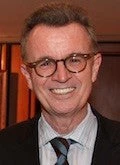In his Inquiry into the Nature And Causes of the Wealth of Nations Adam Smith pointed to the social-inclusion role of a linen shirt in 18th century Europe:
“A linen shirt … is, strictly speaking, not a necessary of life. 
This passage has often been used to justify the view that poverty is not absolute but relative—that certain socially-specific expenditures are essential for social inclusion, on top of basic needs for nutrition and physical survival.
The way this idea is implemented in practice is to set a “relative poverty line” that is a constant proportion of average income for the country and date in question. That is how poverty is measured in most of Western Europe. By contrast, poverty measures in developing countries have almost invariably used absolute lines, which aim to have a fixed real value over time. The World Bank’s international “$1 a day” poverty lines also aim to be absolute lines across countries, using purchasing power parities from the International Comparison Program.
Yet much social science research in developing countries has confirmed the social roles of certain forms of consumption—just as Adam Smith had noted about a linen shirt in 18th century Europe. Anthropologists and economists have pointed out that festivals, celebrations and communal feasts are not just entertainment. They have an important social role in maintaining the networks that are crucial to coping with poverty and even escaping it. Household budget surveys have often revealed seemingly high expenditures on celebrations and festivals by very poor people. It is also known that clothing can serve an important social role. In many developing countries today one can see even very poor, and evidently undernourished, people with cell phones. And much research has also suggested that people in poor countries care about relative deprivation, as typically revealed through self-reported questions on happiness or satisfaction with life.
But such research findings do not imply that poverty lines should also be set at a constant proportion of the mean. This assumes (implicitly) that the cost of social inclusion needs are much lower for poor people—indeed, their cost goes to zero as incomes fall to zero. That is implied by a poverty line set at a constant proportion of average income. If we were to apply such an idea to poor countries—recognizing that poor people too have social inclusion needs—we would be saying that the cost of Adam Smith’s linen shirt can be virtually zero for the poorest person. But that makes no sense; the cost of a socially-acceptable linen shirt will not be zero, and will presumably be no different for a poor person. This is a troubling property of such poverty measures.
To come up with a feasible approach to measuring “relative poverty” that can span both poor and rich countries, Tony Atkinson and Francois Bourguignon (AB) have postulated two key capabilities, namely physical survival and social inclusion. The former is the capability of being adequately nourished and clothed for meeting the physical needs of survival and normal activities. On top of this, a person must also satisfy certain social inclusion needs. Each capability has a corresponding poverty line, giving the absolute and relative lines. AB proposed that one should only be deemed “not poor” if one is neither absolutely poor nor relatively poor.
However, AB follow the Western European model of assuming that the relative line is a constant proportion of the mean. This assumption needs to be dropped, to allow for the (strictly positive) cost of Adam Smith’s linen shirt. On doing so one gets the “weakly relative poverty lines” that I have proposed in a paper with Shaohua Chen, soon to be published here. The following figure shows how we implement the idea, using the same data set on national poverty lines that we used to derive the new international absolute line of $1.25 a day (as documented here).
The weakly relative line is $1.25 a day up to a mean consumption of $2 a day, and then rises with a slope of 1:3. The lower bound to the relative line is $0.60 a day, which can be thought of as the cost of Adam Smith’s linen shirt.
With economic growth, our weakly relative poverty lines tend to rise after some point, and proportionately more as average income rises. But they will never be proportionate to the mean. So if all incomes grow at the same rate, all poverty measures will show a decline. This is in marked contrast to the strongly relative measures, which will show no change even when incomes of the poor grow at the same rate as for others.
On implementing this schedule of weakly relative poverty lines using 700 surveys for 115 countries, Chen and I find that there is more relative poverty in the developing world than previously thought. And the pace of progress against relative poverty is slower than that against absolute poverty. We find that 47% of the population of the developing world lived in relative poverty in 2005, of which about half lived in absolute poverty, as measured by the $1.25 a day line. The incidence of relative poverty fell from 53% in 1990 and 63% in 1981. This was not a sufficient rate of decline in the incidence of poverty to prevent a rise in the number of poor. By contrast, the corresponding absolute poverty measures show falling poverty counts in the aggregate.
In the coming months we will be updating the global poverty measures to 2008, including the (weakly) relative measures. We would like to hear what you think about this approach to incorporating the insights from Adam Smith about the importance of social inclusion needs.



Join the Conversation